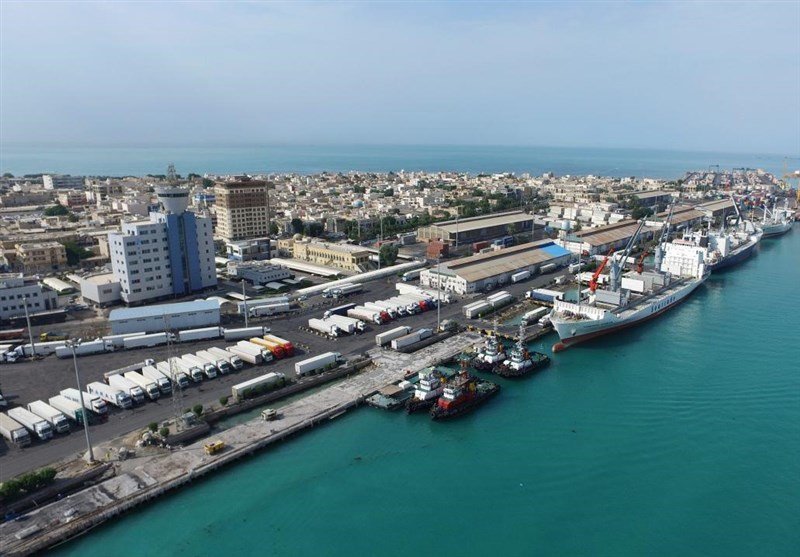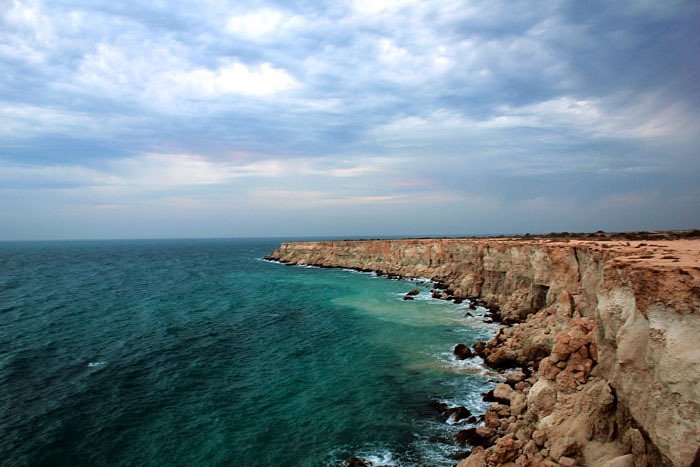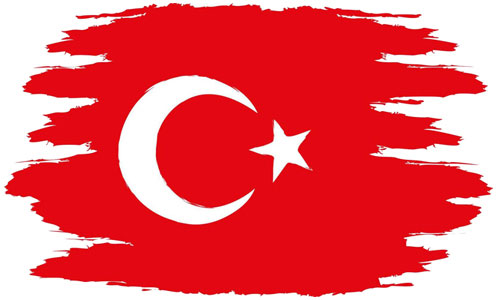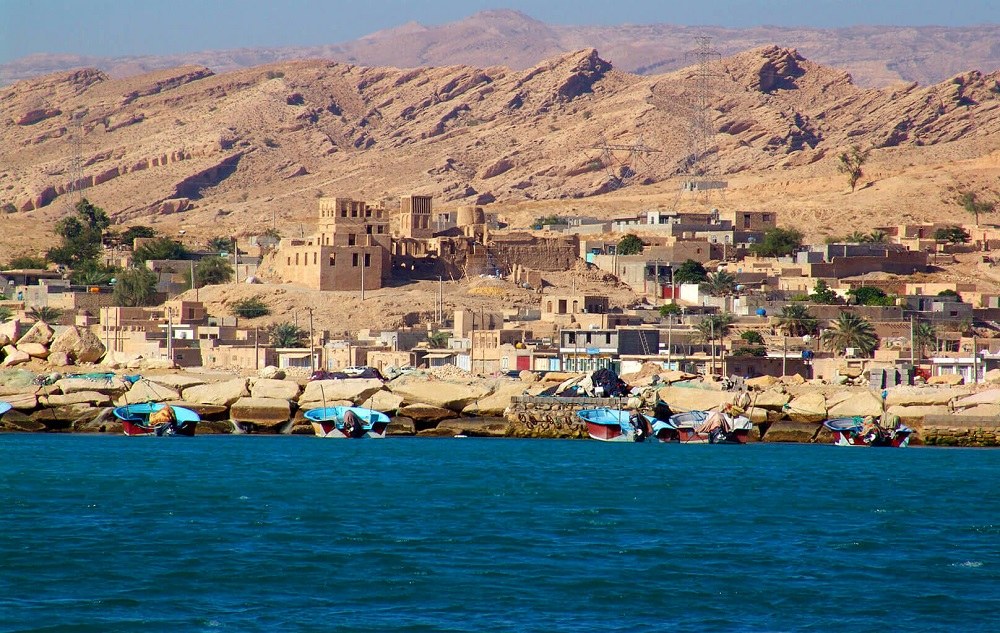Introduction
Iran is a country with a rich culture, history, and geography. One such province in Iran is the Bushehr (Bandar-e-Bushehr) province, located on the southwestern coast. The province has been a significant center of trade and
commerce throughout history and continues to play a prominent role in Iran's economy. In this comprehensive 10,000 words essay, we will discuss the cultural, literary, art, social, economic, geographical, and historical aspects of the Bushehr province. We will also explore the province's role in the context of the great Iranian civilization, the importance of studying its culture and history, and the competitive advantages that make the province a crucial element in contemporary progress towards sustainable development.
Geographical Features
Bushehr (Bandar-e-Bushehr) province is located on the southwestern coast of Iran, bordered by the Persian Gulf to the south and the Zagros Mountains to the east. The province covers an area of 28,433 square kilometers and is divided into ten counties. The area is known for its warm climate, making it an ideal destination for tourists. The province's coastline extends for over 500 kilometers, which makes it a significant center for fishing and maritime trade.
The province's location between the Persian Gulf and the Zagros
Mountains contributes to the unique landscape and geography of the area. The mountains are known for their rich mineral veins, which have been mined for centuries. The area's large salt flats have been utilized throughout history for the salt trade. Bushehr's coastline includes several islands, such as Hormuz Island, Kish Island, Qeshm Island, and Hengam Island.
Cultural Aspects
Bushehr province, like most regions in Iran, has a rich culture that has been influenced by the area's geography and history. The province's diverse population includes Arabs, Persians, Balochs, and Lurs, each maintaining their unique cultural traditions and practices. The province's cultural heritage is evident in its architecture, cuisine, music, and folklore.
Architecture
The province's architecture is an essential aspect of its cultural heritage, with many ancient buildings and monuments dating back to the Achaemenid era (550 BCE-330 BCE). The Bushehr city's "Bushehr Castle," one of the oldest existing castles in Iran, was built during the Achaemenid dynasty and served as a significant military fortress. The castle's unique
architecture combines Persian and Arabic styles and serves as a living museum, showcasing the province's history.
Bushehr's architecture includes traditional mud-brick buildings, which are still used in some rural areas. The province's coastal cities, such as Bandar-e-Bushehr, Tangestan, and Genaveh, feature beautiful historic buildings with intricate stucco decorations and colorful tiles. The province's mosques, such as the Jame mosque in Bandar-e-Bushehr, are also known for their unique architectural styles.
Cuisine
Bushehr's cuisine is a blend of Persian and Arabic flavors, with seafood dishes being a prominent feature of the province's cuisine. The province's coastal cities are known for their fresh seafood and fish dishes, such as Sabzi polo ba mahi (herb rice with fish) and Ghalyeh mahi (fish stew). The province's traditional cuisines also include Ash-e-Tokhm-e-Shar (spinach and bean soup) and Baghala Ghatogh (lima bean and herb stew).
Music
The province's music has roots in
traditional Persian and Arabic music, with local instruments such as the Oud (a pear-shaped stringed instrument) and Ney (a reed flute) being commonly used. Bushehr's music is known for its melancholic and soulful melodies that evoke a feeling of nostalgia.
Folklore
The province's folklore is a rich tapestry of stories and legends that have been passed down through the generations. Many of these stories are influenced by the province's location, with tales of pirates, sea monsters, and mermaids being common. The stories are often told through music and dance performances, which feature traditional costumes and instruments.
Literary Aspects
Bushehr province has a rich literary tradition, with many notable poets, writers, and scholars coming from the area throughout history. The province's geographical location, with its rich natural resources and
strategic position as a trading hub, has contributed to its literary legacy.
Poetry
Bushehr's poets are known for their beautiful and poignant poetry, with many of their works describing the province's natural beauty and its people's struggles. The province's poetry includes both Persian and Arabic styles,
with notable poets.

Bushehr's art reflects its unique cultural heritage
Literature
The province has also produced many prominent writers and scholars throughout history, with their works ranging from philosophy and theology to
travel, literature and historical texts.
Art Aspects
Bushehr's art reflects its unique cultural heritage, with many local artists incorporating traditional techniques and motifs into their work. The province's art includes a range of mediums, such as pottery, weaving, calligraphy, and
painting.
Pottery
Bushehr's pottery is known for its intricate designs and patterns, featuring bright colors and unique shapes. The pottery often depicts local flora and fauna, as well as scenes from everyday life.
Weaving
Bushehr's weaving tradition is passed down through generations, with many women in the province continuing to weave rugs and textiles using traditional
techniques. The rugs often feature bold colors and intricate designs, incorporating motifs from the area's natural landscape.
Calligraphy
Calligraphy is a significant aspect of Iranian art, and Bushehr is no exception. The province's calligraphers practice both Persian and Arabic calligraphy styles, producing beautiful works of art.
Painting
Bushehr's painters are known for their unique style, blending traditional and
modern techniques to create works of art that reflect the province's culture and history. Many of the paintings depict local landmarks and natural landscapes, such as the mountains and coastline.
Social Aspects
Bushehr's social landscape is shaped by its diverse population and unique cultural traditions. The province's social aspects include family values, education, and healthcare.
Family Values
Bushehr's family values are deeply rooted in its cultural and religious traditions, with community and family ties being highly valued. The province's families often have close relationships with each other, with multiple generations living together in the same household.
Education
Education is essential in Bushehr, with several universities, research centers, and cultural centers located in the province. The province's universities offer programs in a range of fields, including medicine,
engineering, and humanities.

Bushehr's economy is driven by its natural resources
Healthcare
Bushehr's healthcare system has made significant strides in recent years, with many modern hospitals and clinics being established in the province. The healthcare system also provides support for traditional medicine, with many patients seeking alternative
treatments such as herbal remedies and acupuncture.
Economic Aspects
Bushehr's economy is driven by its natural resources, strategic location, and infrastructure. The province's economy includes agriculture, fisheries, mining, and oil production.
Agriculture
Bushehr's fertile land is used for the cultivation of crops such as wheat, rice, and barley. The province is also known for its date palms, which
produce the prized Bam dates.
Fisheries
Bushehr's coastal location makes it a significant center for fishing, with several fishing ports and processing plants located in the province. The province's seafood products are exported throughout Iran and the Middle East.
Mining
Bushehr's mountains are rich in resources such as copper, lead, zinc, and iron. The province's mining industry produces these minerals and exports them to other countries.
Oil Production
Bushehr's oil production is a significant contributor to Iran's economy, with the province being home to Iran's first nuclear power plant. The province's oil production facilities provide employment and contribute
to the country's energy needs.
Historical Aspects
Bushehr province has a rich history that stretches back to ancient times. The province's unique location and natural resources have made it an important trading center and strategic location throughout history.
Ancient History
The province's ancient history is characterized by its strategic location between the Persian Gulf and the Zagros Mountains. The area was an important trade hub and was inhabited by several
civilizations, such as the Elamite and Achaemenid empires.
Islamic Golden Age
The Islamic Golden Age had a significant impact on Bushehr's history, with the province becoming an important center for science and arts during this time. The province's scholars were renowned for their contributions to medicine, astronomy, and
literature.
Modern History
The province has played a significant role in Iran's modern history, with the province serving as a center for anti-imperialist movements. The 1953 Iranian coup d'état and the subsequent Islamic Revolution of 1979 were significant events that shaped the province's modern history.
The Role of Bushehr Province in the Context of Great Iran Civilization
Bushehr province has played a significant role in the context of the great Iranian civilization, contributing to its cultural heritage, economic prosperity, and strategic importance. The province's
geographical location between the Persian Gulf and the Zagros Mountains has made it an important trading center and provided access to valuable resources. The province's scholars and artists have made significant contributions to the country's culture and intellectual achievements.
Some notable events in Bushehr province's contribution to the great Iranian civilization include the establishment of important trade routes during the Achaemenid era, the scientific advancements made during the Islamic Golden Age, and the province's role in anti-imperialist movements during modern times.
The Importance of Studying Bushehr Province's Culture and History
Studying Bushehr province's culture and history is essential for understanding Iran's rich cultural and historical heritage. The province's unique geography, diverse population, and historical events make it an ideal subject for study.
Studying the province's culture and history can help preserve its heritage and traditions. It can also shed light on its contributions to scientific and intellectual achievements, as well as its role in anti-imperialist movements.
Furthermore, understanding Bushehr province's culture and history can help promote cultural
exchange and understanding between different communities. It can contribute to building stronger relationships between Iran and other countries and foster a deeper appreciation for Iran's cultural heritage.
Bushehr Province's Competitive Advantages in Iran's Contemporary Progress towards Sustainable Development
Bushehr province's competitive advantages make it a crucial element in Iran's contemporary progress towards sustainable development. The province's strategic location, natural resources, and infrastructure provide
opportunities for economic growth and development.
Some of Bushehr's competitive advantages include its extensive coastline, rich mineral resources, oil production facilities, and modern transportation infrastructure. The province's universities, research centers, and cultural institutions also provide opportunities for innovation and intellectual advancement.
The province's potential for sustainable tourism is another competitive advantage, with many beautiful natural attractions and a rich cultural heritage that can serve as a draw for tourists. Developing sustainable tourism in the province can promote economic growth and provide opportunities for local communities.
Conclusion
In conclusion, Bushehr (Bandar-e-Bushehr) province is a unique and fascinating region with a rich history, culture, and geography. The province's cultural heritage includes architecture, cuisine, music, and folklore. Its literary tradition includes poetry, literature, and calligraphy. The province's art includes pottery, weaving, calligraphy, and painting. Its social aspects include family values, education, and
healthcare. Bushehr's economy includes agriculture, fisheries, mining, and oil production. The province has played a significant role in Iran's history, providing access to valuable resources and serving as a center for intellectual and cultural achievements. Studying Bushehr's culture and history is essential for understanding Iran's rich heritage, promoting cultural exchange, and building stronger relationships between Iran and other countries. The province's competitive advantages make it an
essential element in Iran's contemporary progress towards sustainable development, providing opportunities for economic growth, innovation, and cultural exchange.
Dear Visitor; Please take a look at the list of 50 most visited websites in the world wide web: YouTube, Facebook, google, translate, gmail, weather, amazon, Instagram, cricbuzz, Hotmail, wordle, satta king, twitter, yahoo, yandex, sarkari result, Netflix, google maps, yahoo mail, roblox, whatsapp, NBA, BBC news, outlook, pinterest, flipkart, eBay, omegle, live score, tiktok, canva, ipl, premier league, hava durumu, ibomma, walmart, twitch, ikea, shein, linkedin, home depot, e devlet, lottery, snaptik, cricket, serie a, nfl, spotify, fox news, amazon prime; There is no book publishing related or project management website in this list. We are working hard to bring these important issues to the center of concentration of societies. Please introduce us via social media, share our website with others and help us to make our world a better place to live. Best Regards.













Write your review